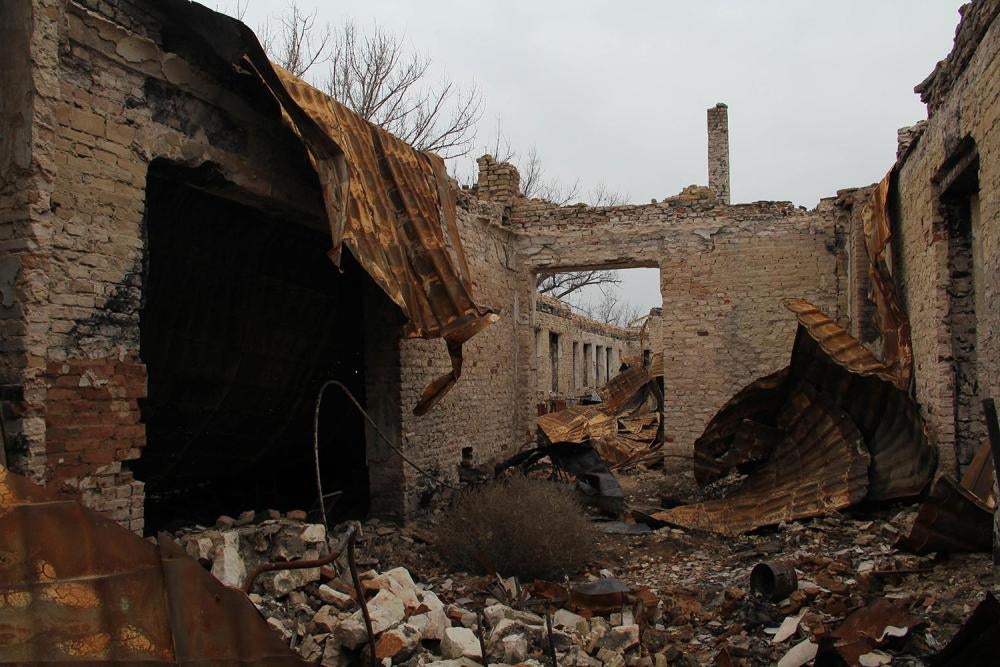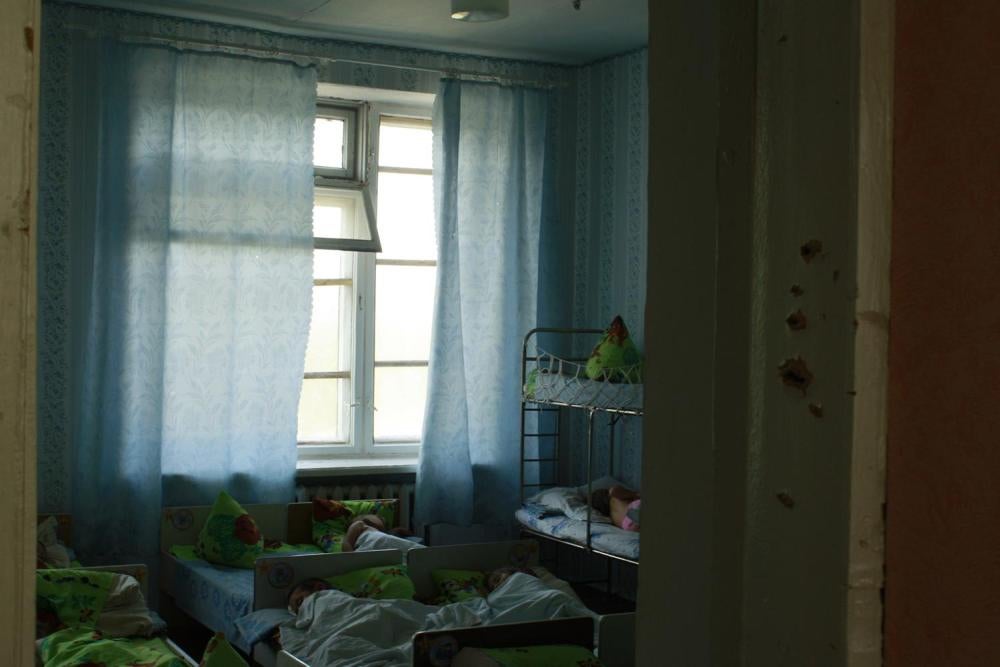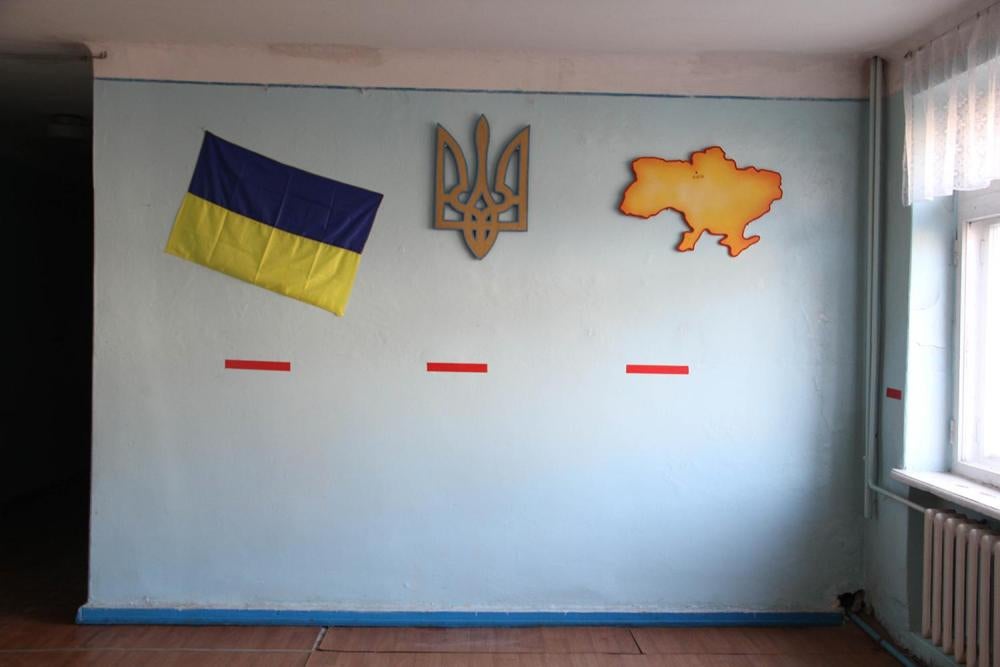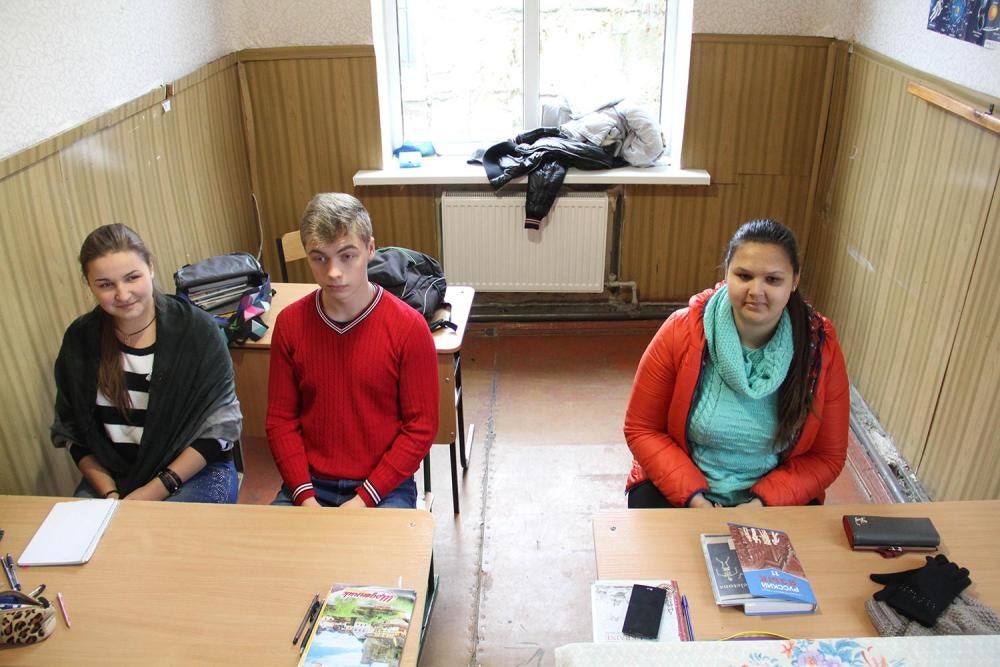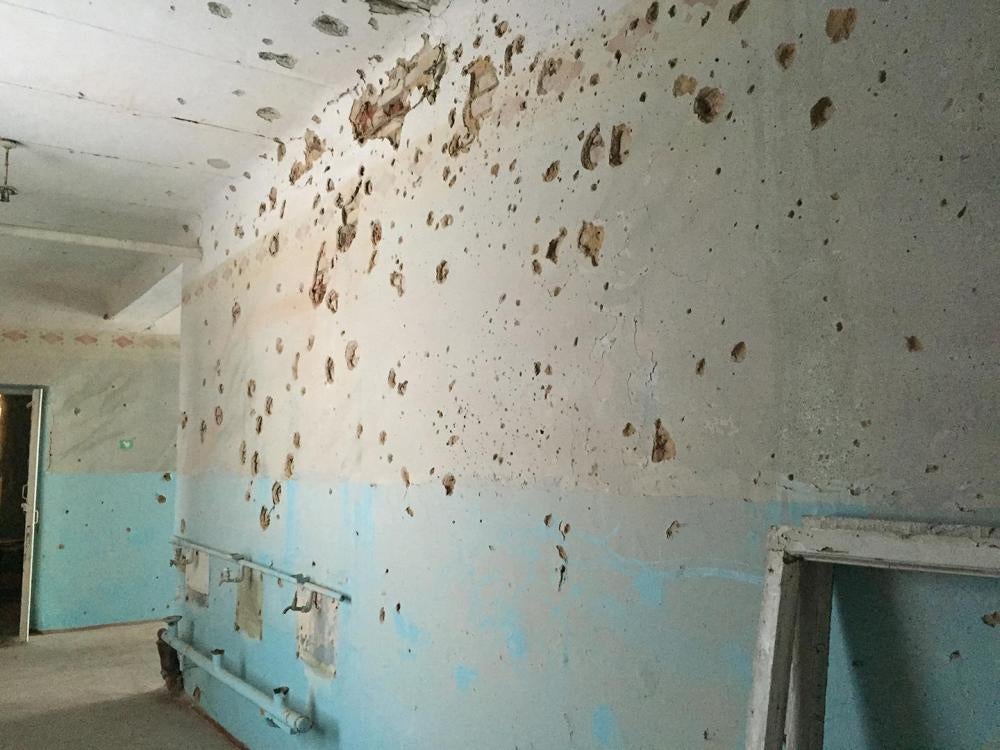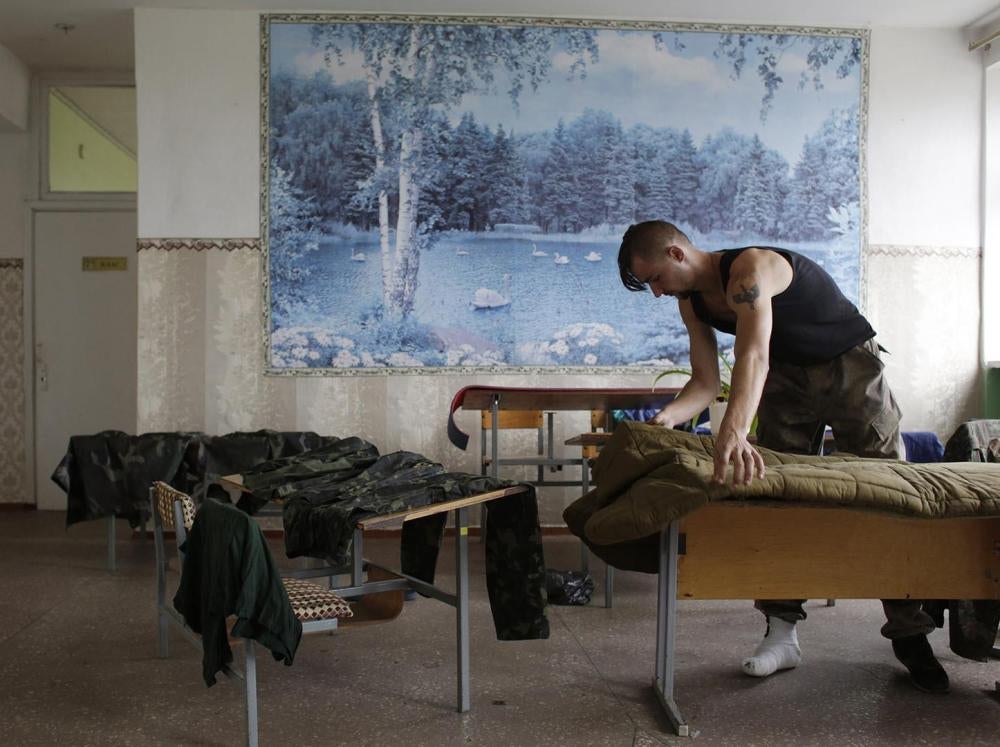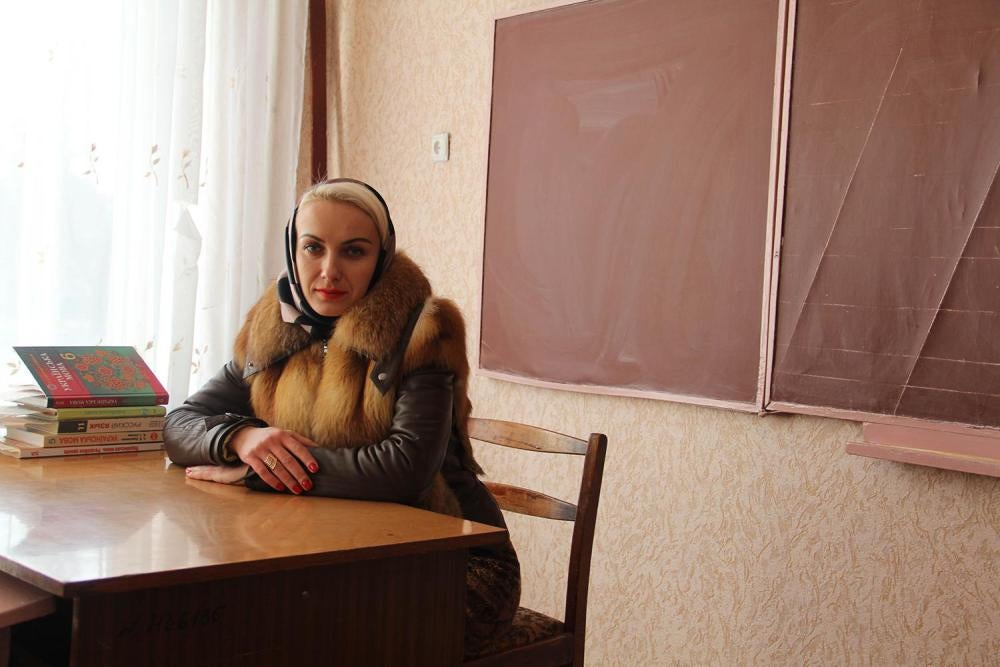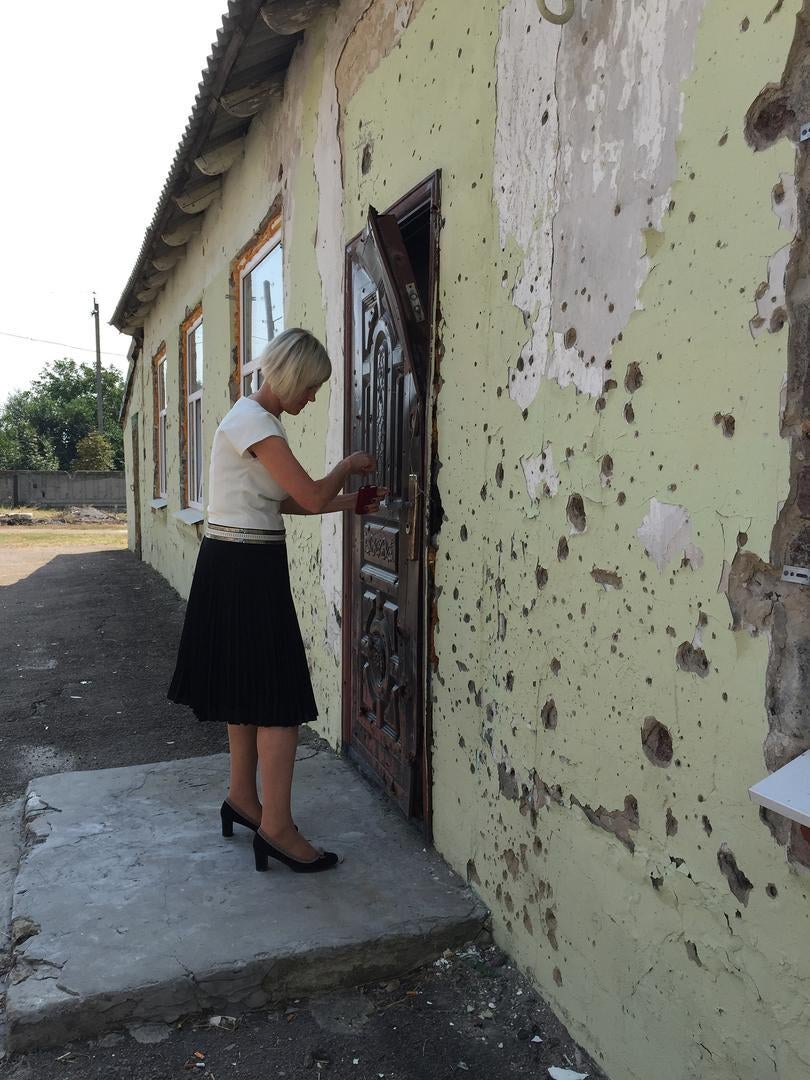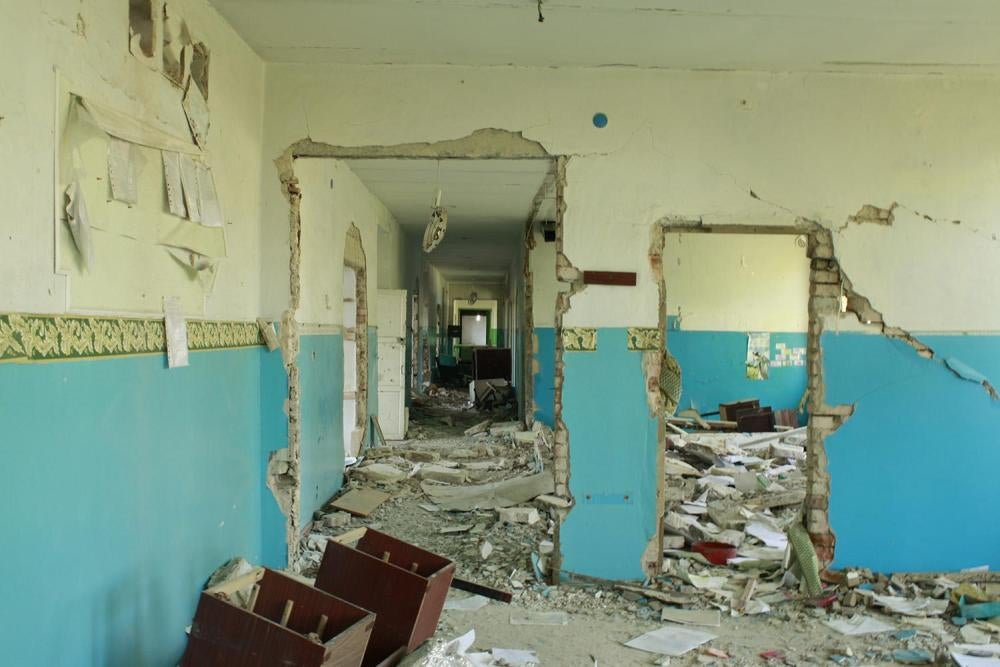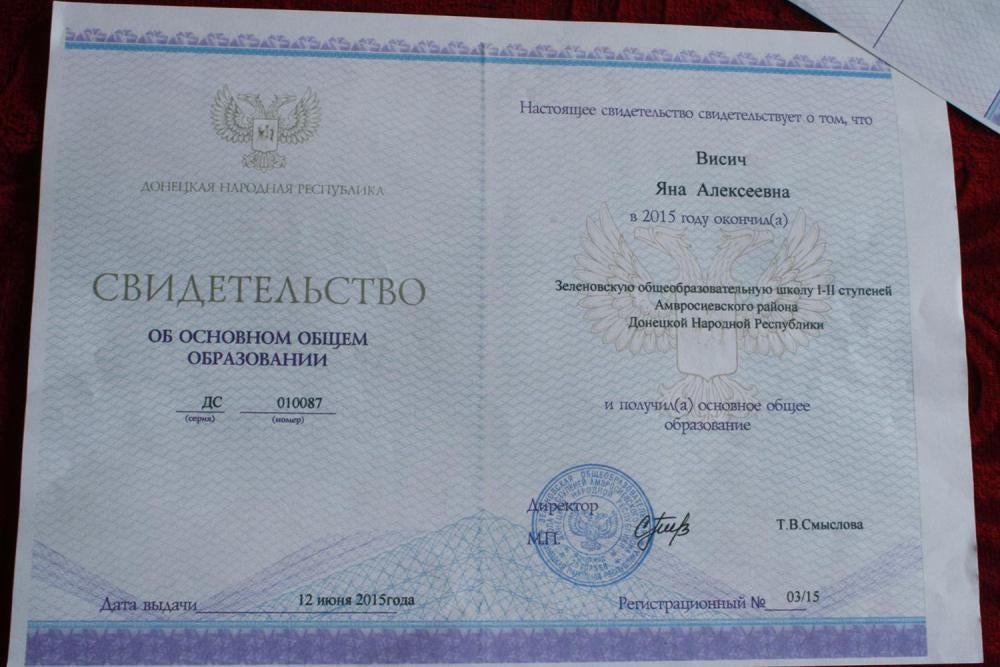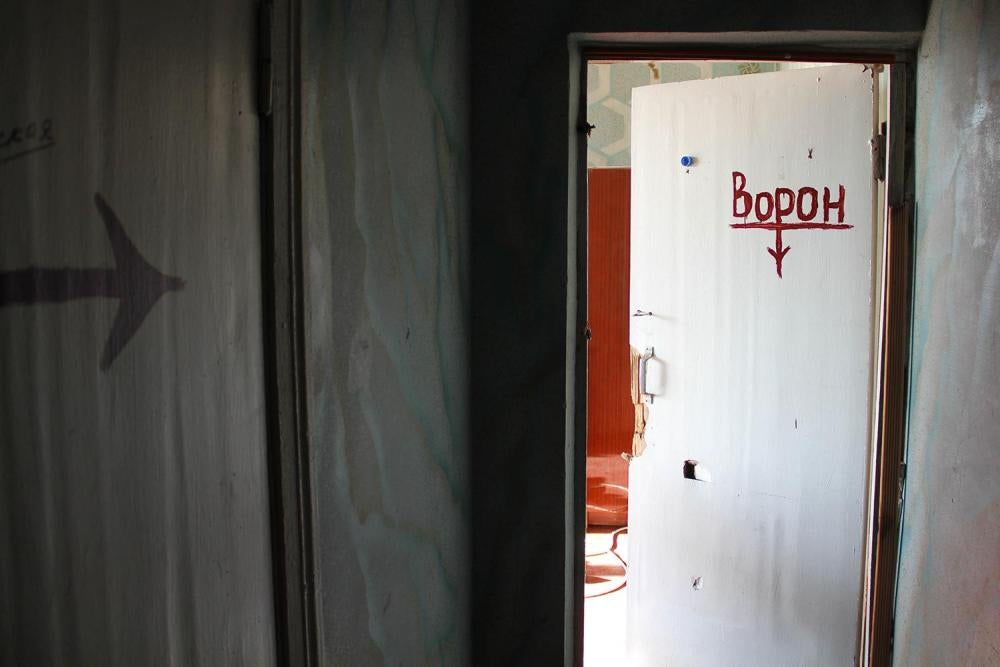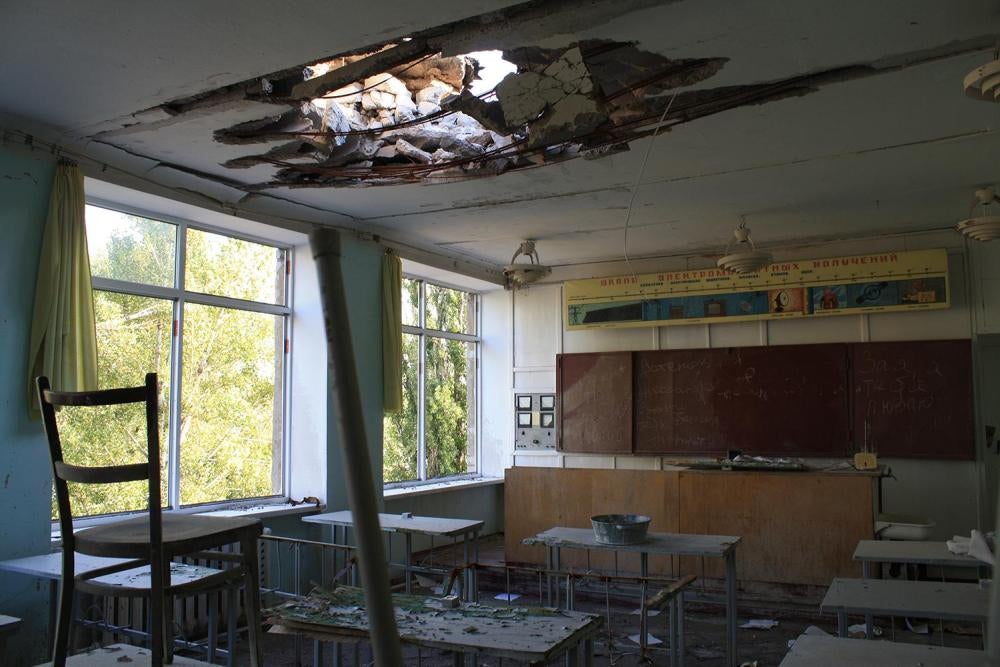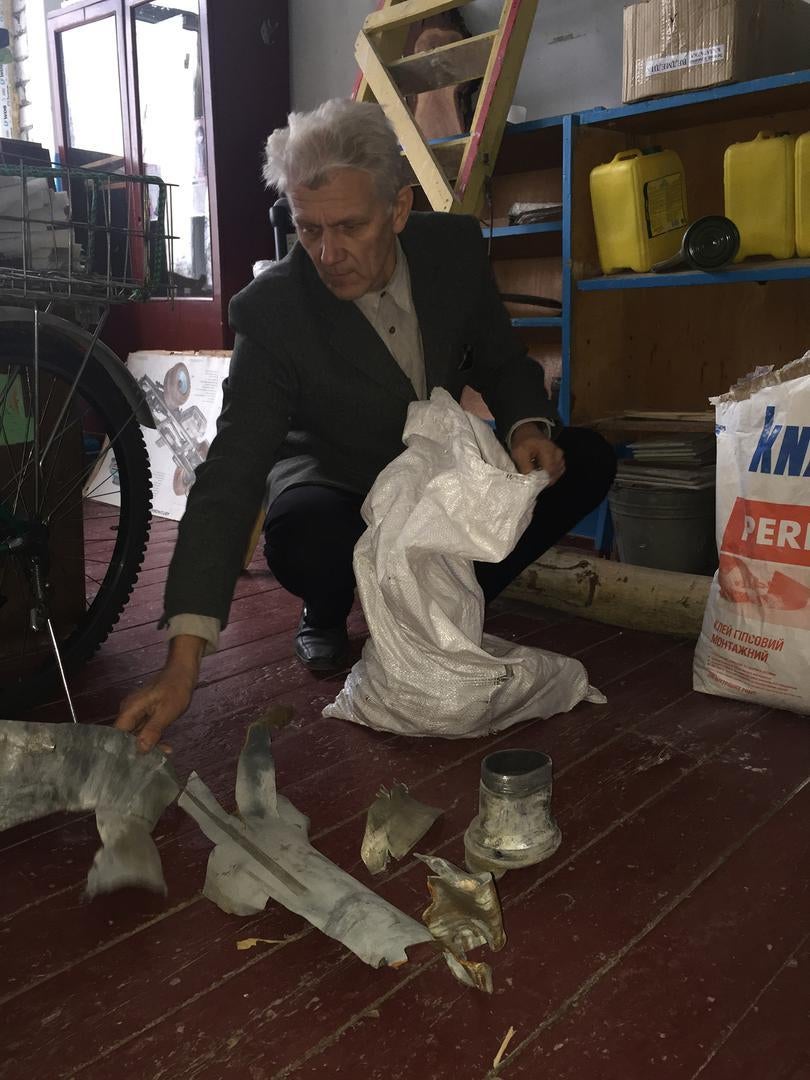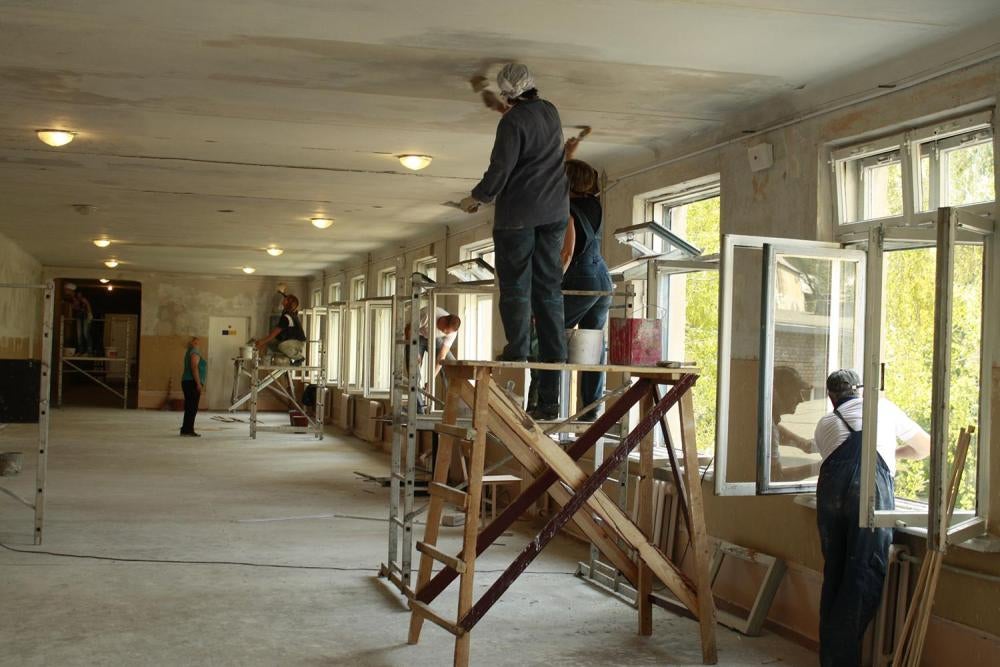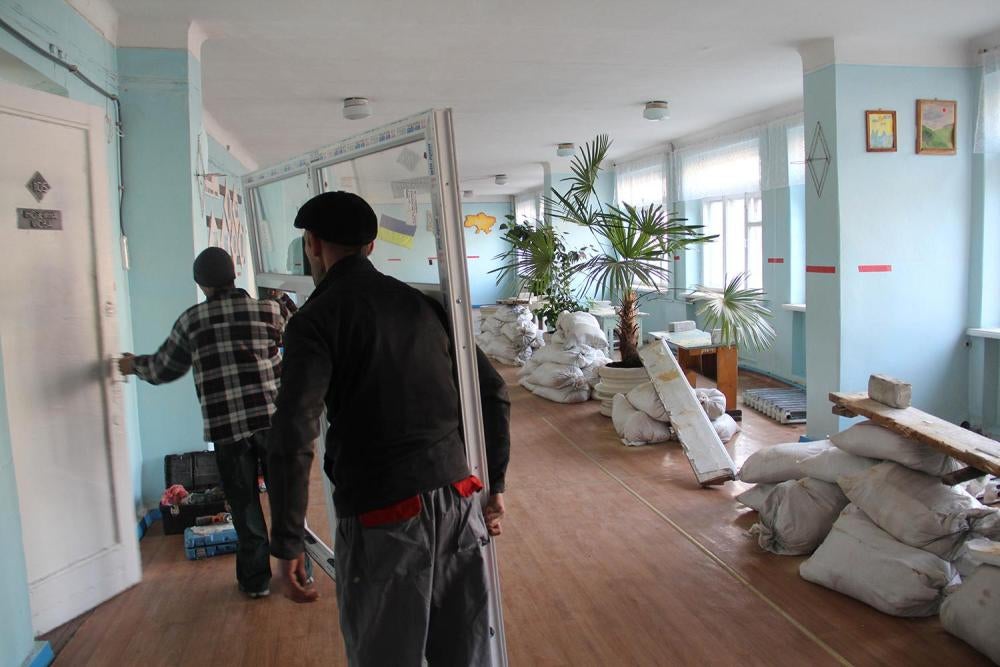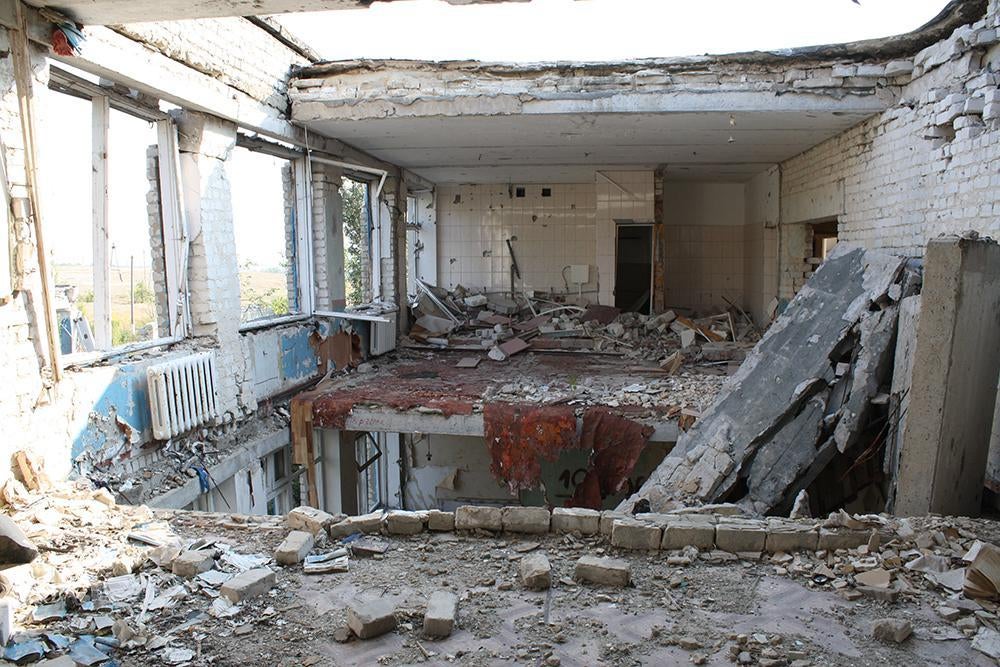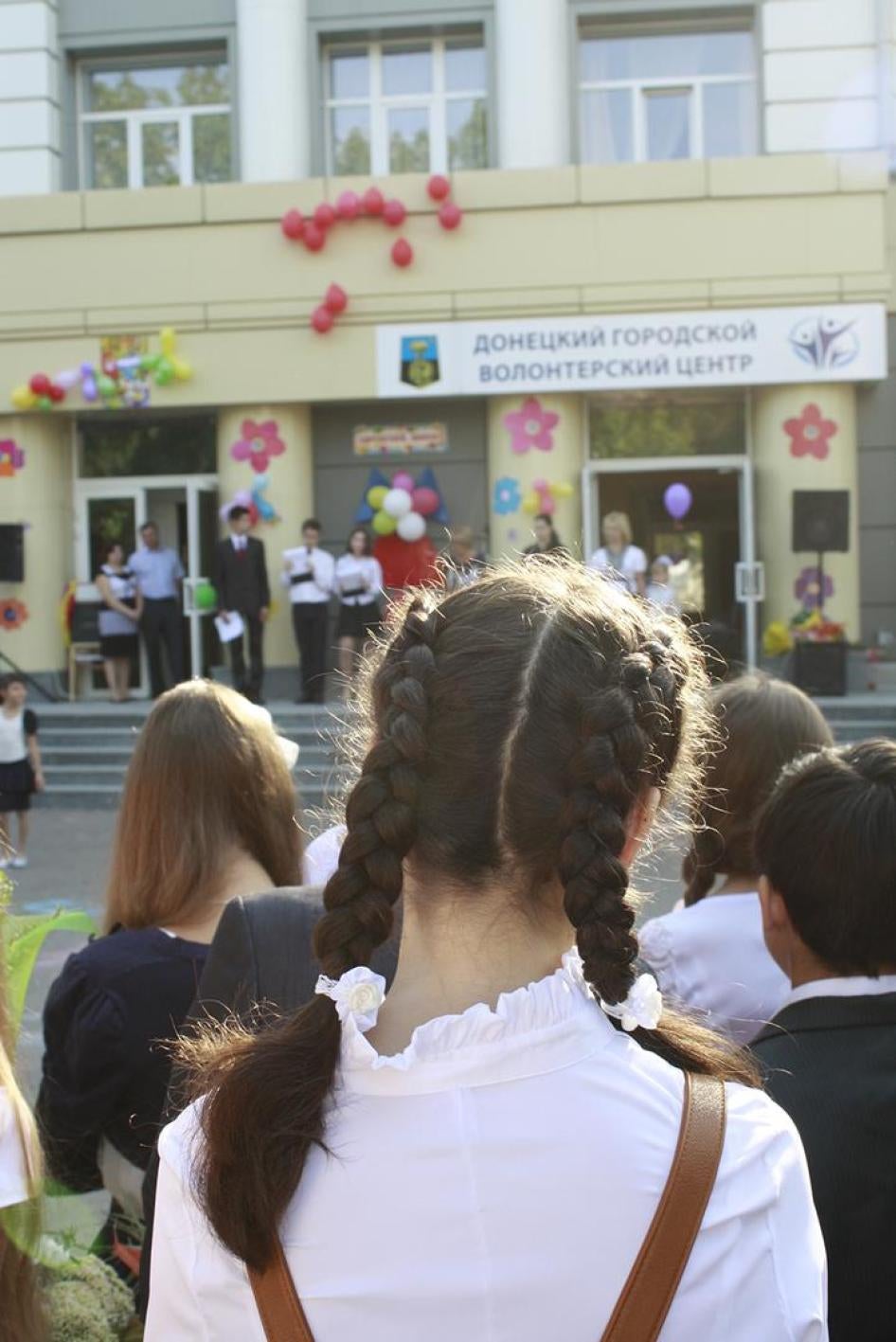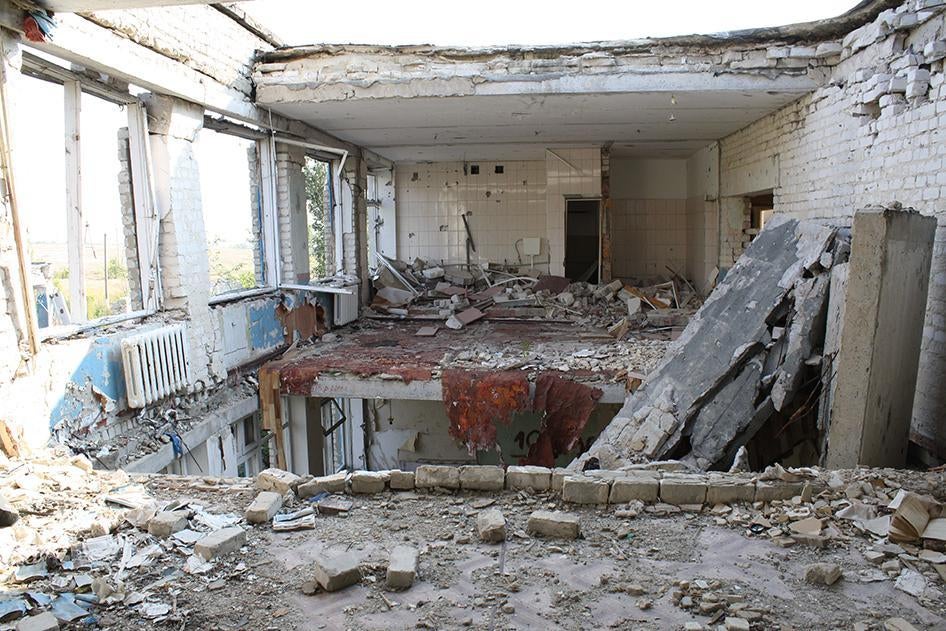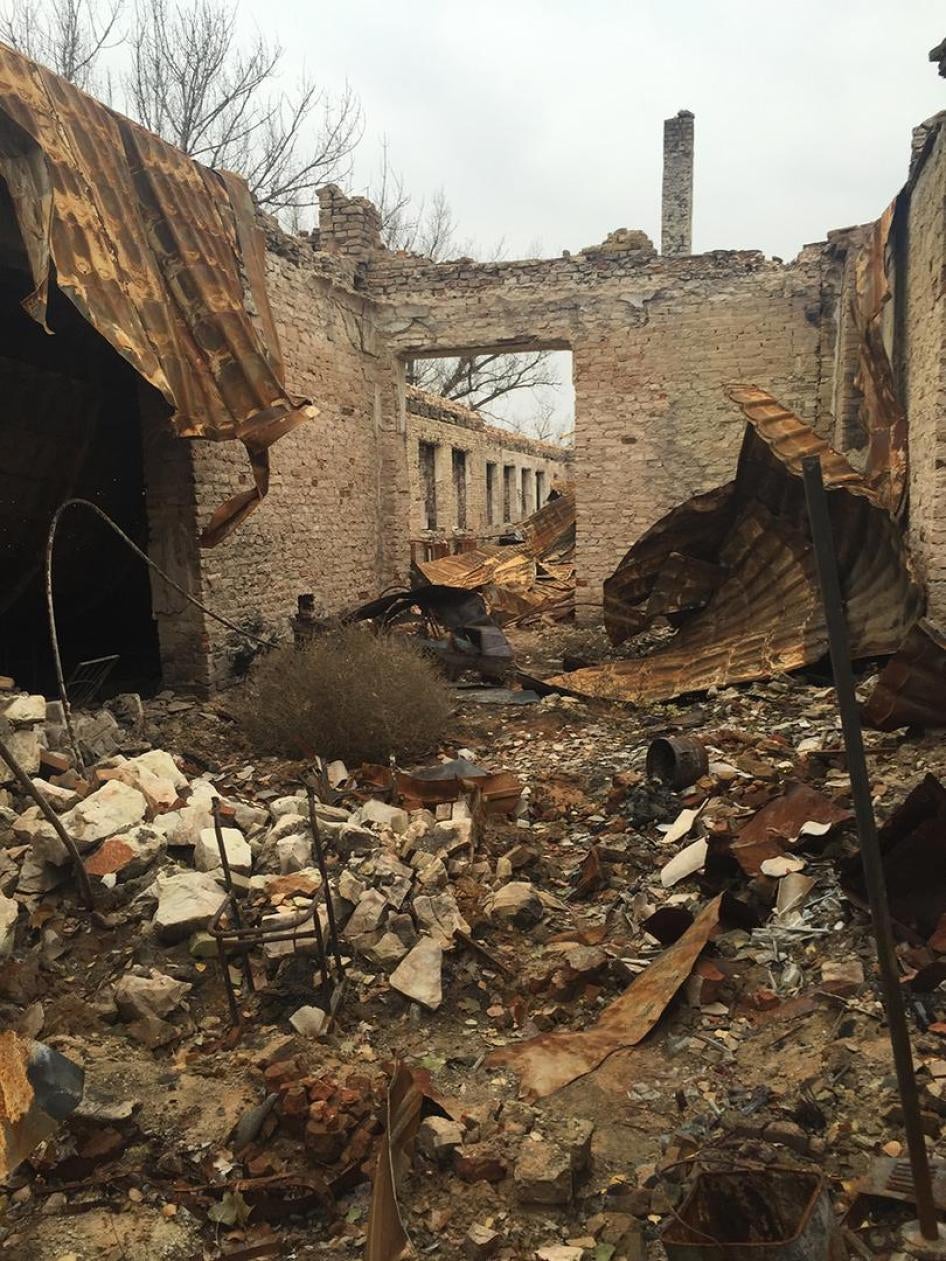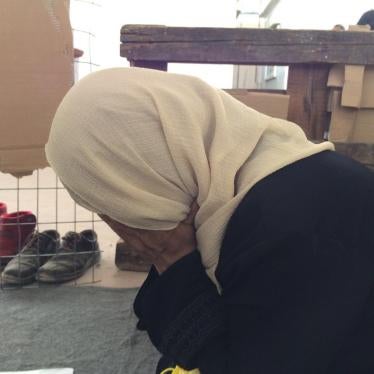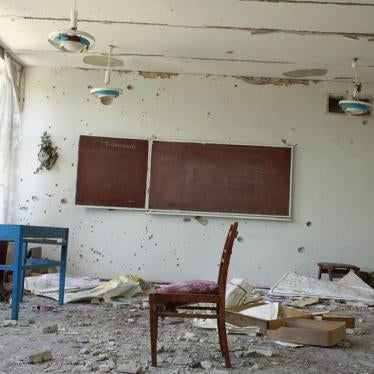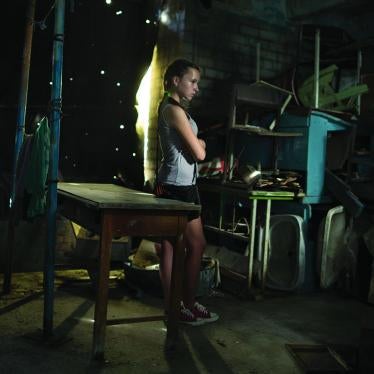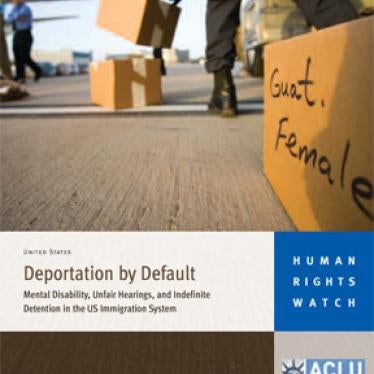(Berlin) – Hostilities in eastern Ukraine have damaged or destroyed hundreds of schools, many of which were used by parties to the conflict for military purposes, Human Rights Watch said in a report released today.
Attacks on Schools, Military Use of Schools During the Armed Conflict in Eastern Ukraine
The 65-page report, “Studying Under Fire: Attacks on Schools, Military Use of Schools During the Armed Conflict in Eastern Ukraine,” documents how both Ukrainian government forces and Russia-backed militants have carried out indiscriminate or deliberate attacks on schools. Both sides have used schools for military purposes, deploying forces in and near schools, which has turned schools into legitimate military targets. The resulting destruction has forced many children out of school and many schools to stop operating or to operate under overcrowded and difficult conditions, Human Rights Watch found.
“Civilians, including children, on both sides of the line of contact have been bearing the brunt of this protracted war,” said Yulia Gorbunova, Ukraine researcher at Human Rights Watch. “All parties to the conflict have a
responsibility to protect children and to make sure that their hostilities don’t cause further harm to their safety and education.”
Human Rights Watch interviewed 62 students, teachers, principals, and witnesses for the report, and visited 41 schools and kindergartens, located both in government-controlled areas and territories controlled by Russia-backed militants.
Human Rights Watch documented attacks on schools on both sides of the line of contact that were not being occupied or used by the military and therefore did not appear to be military objectives. Targeted attacks on educational institutions that do not constitute military objectives and indiscriminate attacks that fail to distinguish civilian objects, such as schools, are prohibited under the laws of war, and can be prosecuted as war crimes.
In one case, in June 2015, an artillery attack from the direction of rebel-held territory severely damaged School Number 3 in Krasnohorivka, a government-controlled town in Donetsk region. The school building took 12 direct hits. A military checkpoint 700 meters from the school was not hit. The school principal, who believed that the school was the target of the attack, told Human Rights Watch: “We used to joke that the checkpoint was the safest place to hide because they never hit it.”
Throughout the conflict, Ukrainian government forces and Russia-backed militants alike have deployed military forces in and near schools. When military forces occupied schools, they frequently broke or burned school furniture, including classroom doors, chairs, and desks. In many instances, schools that had been used by fighters remained unsafe because troops left behind heavy artillery or unused munitions.
The principal of School Number 14 in Ilovaisk told Human Rights Watch that when Ukrainian government forces occupied the school for two weeks in August 2014, they damaged school furniture, broke all the doors, and smashed 11 computers. In October 2014, Human Rights Watch researchers found several unexploded landmines on the school grounds, apparently ejected from a supply truck while it was parked in the schoolyard.
While a school is normally a civilian object, and protected under the laws of war from attack, when it is used for military purposes or occupied by the military this changes its status to a legitimate military target. Creating a legitimate military target in a location next to or near civilians, such as students at schools, places those civilians at risk, in violation of international humanitarian law.
Ukraine’s Ministry of Education and Science has acknowledged in meetings with Human Rights Watch that Ukrainian government forces have used schools for military purposes. By endorsing the international Safe Schools Declaration, already signed by 51 other countries, Ukraine would make a commitment to protect education from attack. Ukraine should also review its military policies, practices, and training to ensure that they, at a minimum, conform to the “Guidelines for Protecting Schools and Universities from Military Use during Armed Conflict,” which provide guidance on how parties to armed conflict should avoid impinging on students’ safety and education. The rebel forces should draw upon examples of good practices.
Even in places where Ukrainian children have not been forced out of school entirely, the armed conflict has eroded the quality of their education. Some schools were forced to close during periods of intense fighting, leading to months of lost classroom time. Classroom time has also been lost because of overcrowding, as damaged schools awaiting repairs send their students to other schools, often for extended periods when schools are unable to repair or convert damaged heating systems.
Children have faced obstacles simply reaching schools due to ongoing hostilities, government-imposed travel restrictions, and lack of transportation.
“Teachers and parents on both sides of the contact line have shown tremendous commitment to continue children’s education despite the war,” Gorbunova said. “The warring parties should do also a lot more to avoid irreparably harming children’s safety and education.”
